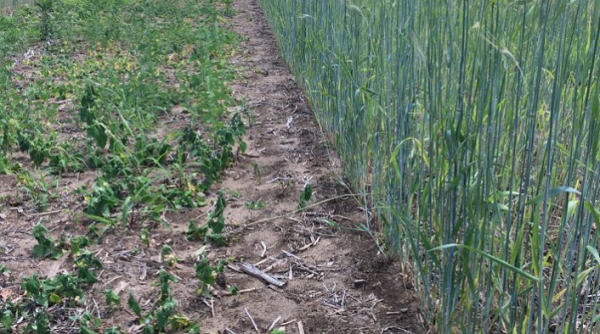
My colleague Dr. Clarence Swanton (University of Guelph) used to say that based on research he did in the 1980’s, one should not expect to control weeds with cover crops. Their utility was in preventing soil erosion and improving soil health but not in significantly reducing weed populations. However, Dr. Swanton has had to re-think his long-held position on cover crops and weed control is given recent observations from on-farm research trials where fall-seeded cereal rye has reduced glyphosate-resistant Canada fleabane populations.
University of Guelph graduate student Ted Vanhie, under the supervision of both Swanton and Dr. François Tardif, are looking at an integrated approach to the control of glyphosate-resistant Canada fleabane using tillage, herbicides and fall seeded cereal rye. The concept being that frost seeding fall rye ahead of soybeans could significantly reduce populations of this weed and improve herbicide control. Below are observations Mr. Vanhie has made during the spring of 2018.
- Fall tillage followed by planting cereal rye resulted in the best control of glyphosate-resistant Canada fleabane in the absence of herbicides. (Figure 1)
- Although glyphosate-resistant Canada fleabane was still found in no-till fall-seeded cereal rye, there were fewer and smaller plants compared to where no cereal rye was established and no fall tillage operation performed. (Figure 2 and 3).
- Control of Canada fleabane with herbicides was improved in no-till plots where cereal rye was established (Figure 4 – preliminary data from Ted Vanhie)
- Cereal rye at 50-60 lbs/acre provides little ground cover and shading. It is speculated that there is allelopathy inhibiting recruitment of glyphosate-resistant Canada fleabane (Figure 5). Further experiments will test this hypothesis.